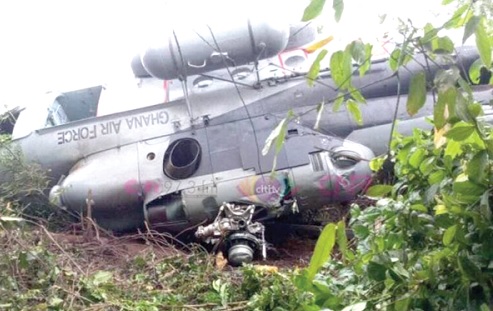
Beyond Coincidence: Forensic lens on 4 aviation disasters
Within a span of 48 hours in early August 2025, the world was shaken by four aviation tragedies stretching across nations — from Ghana to Algeria, Kenya and the United States.
In total, at least 20 lives were lost.
At first glance, the timing seemed like a cruel twist of fate.
Yet, through a forensic and investigative lens, these disasters reveal systemic vulnerabilities in global aviation that go beyond coincidence.
The crashes: A timeline of loss
Ghana (forested area near Adansi Akrofuom, in the general vicinity of Sikaman, Southern Ashanti Region): On August 6, at around 10:00 hours local time.
The involvement of ministers and political party figures and the prominence of the journey as a national assignment, elevated the tragedy from just a weather or technical mishap to a national crisis.
In all, eight people died similarly in Algeria (North Algerian town of Taher, Jijel Ferhat Abbas Airport), in the evening of August 5, 2025, around 1900 hrs local time, Civil Protection surveillance Safir-43, a Z 43 aircraft, crashed.
The victims included two personnel from the Civil Protection force, a flight instructor and a Chilean national, during a training exercise. In all, four people died.
In Kenya (Mwihoko, a residential area on the outskirts of Nairobi), the Cessna Citation 560 ambulance jet XLS went down shortly after departing from the Wilson Airport after 3:00p.m. on Thursday, August 7, 2025.
The four crew members on board who died in the crash included the captain, a first officer, a doctor, nurse and two people on the ground.
In all, six people died.
In the United States (Mississippi River, Missouri), an MD 369 helicopter ran into a power line and crashed around 11:00 a.m. local time, Thursday, August 7, 2025, on the Mississippi River about a half-mile downriver from the Alton Dam.
The pilot and a worker, who was a lineman, working on power lines died.
Four countries, four distinct contexts, yet eerily bound by a common outcome: sudden and catastrophic loss of life.
Systemic vulnerabilities: More than “pilot error”
Aviation disasters are rarely the result of a single cause. Forensic investigations often uncover layered vulnerabilities.
Globally, according to the Airline Safety Statistics: Market Data Report 2024, about 50–60 per cent of crashes link back to human error.
In Kenya, questions have already been raised about whether the helicopter had been properly serviced and whether the pilots had sufficient rest, experience and communication protocols.
In Algeria, early reports suggest technical failure during takeoff, pointing to possible lapses in pre-flight checks or --aging fleet issues common in state aircraft.
Ghana’s tragedy, although investigations are ongoing, raises concerns about how VIP and private flights may sometimes bypass the rigorous oversight applied to commercial airlines, highlighting issues of human factors and emergency preparedness.
In the U.S., investigators are examining whether flight paths and navigation systems adequately safeguard against low-altitude collisions with river barges—an oversight that forensic reconstruction will help clarify.
Each case highlights that aviation safety cannot rely solely on advanced technology; it demands relentless human vigilance, a strong regulatory culture and systemic accountability.
Cross-continental contrasts in safety and forensic capacity
A striking dimension of these crashes lies in how differently nations approach investigation and accountability.
The National Transportation Safety Board (NTSB), USA, deployed multi-disciplinary teams within hours, combining forensic medical teams, flight data analysis and human factors assessment.
Within a week, a preliminary investigation report was published, with a comprehensive disaster forensic assessment to follow.
Findings often drive regulatory reforms. Algeria security aircraft crashes tend to be investigated internally. Families may never receive full reports, fueling speculation.
Ghana military and other aviation authorities have initiated an investigation, but forensic aviation science remains under-resourced.
Ghana depends heavily on international collaboration for black box analysis and crash reconstruction.
Several key agencies were swiftly involved in the emergency response efforts to the scene in Kenya.
However, the robustness of disaster forensics experts remains under resourced.
This disparity in investigative capacity reveals a pressing need for cross-border cooperation and investment in forensic aviation science across Africa.
Although all disasters do not follow the same approach, the underlying principles in responses and preparedness must be proactive rather than reactive.
Forensic lessons and way forward
The forensic sciences remind us that accidents leave behind patterns. Each crash becomes a data point in understanding how humans, machines and systems interact under stress.
In Ghana, although forensic analysis for remains identification was emphasised, toxicological and trace evidence analysis, retrospective psychosocial situations, metallurgical examination of the wreckage, GPS data reconstruction and black box analysis will be key.
In Algeria, black box recordings will clarify whether mechanical failure or human error predominated.
In Kenya, forensic investigations will determine whether all deaths were instantaneous — information vital for improving crash survivability.
In the U.S., collision dynamics and flight path modeling will shape future river navigation policies.
The convergence of four crashes in 48 hours underscores one sobering truth: aviation safety is only as strong as its weakest link, and no nation — rich or poor — is immune.
Conclusion: Beyond coincidence
To dismiss these tragedies as mere bad luck would be to overlook systemic gaps demanding urgent attention.
Aviation safety must evolve from a culture of reaction to one of prevention, anchored in forensic science, international cooperation and uncompromising accountability.
As Ghana mourns and the world reflects, the responsibility lies with regulators, governments and aviation professionals to ensure that the lessons from these four crashes—spanning continents but united in consequence—are not forgotten.
The writers are a forensic medical and security intelligence researcher, pathologist and a chemical pathologist respectively
